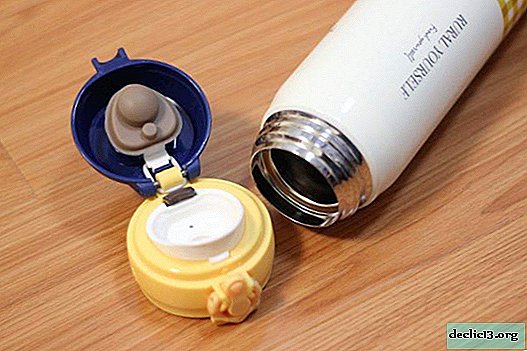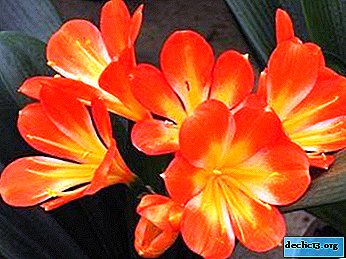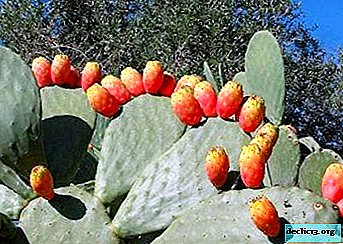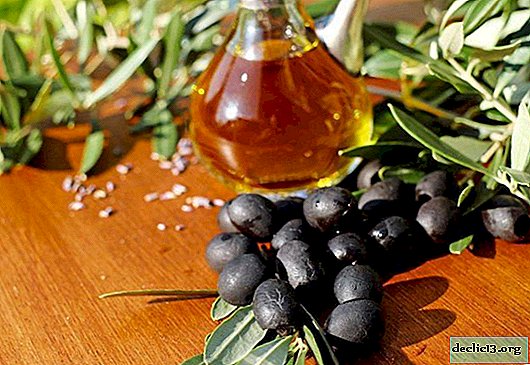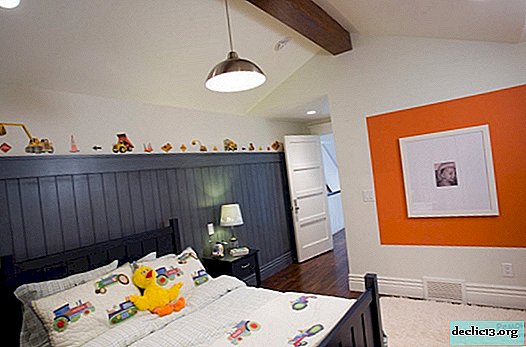Features of Miltonia Orchid. Flower care at home and photo

Exotic fragile beauty, countless aromas, colors, shapes and types - this is about the orchid. Passion for orchids is a very pleasant hobby, a real "hobby of kings."
Incidentally, such a name appeared a long time ago when it was incredibly difficult and expensive to get orchid seedlings. Therefore, only kings could afford such a pleasure.
In this article we will tell you what the difference between Miltonia orchid and other orchids is and give useful tips on caring for this beauty.
Definition
Miltonia is one of the most attractive and unusual orchids., it refers to the type of herbaceous perennials. In nature, this plant settles on tree trunks, but does not parasitize on them, but simply uses it for support.
Reference! Quite successfully, Miltonia is grown and cared for at home, and is also often used for experiments on the creation of new hybrids.Description of appearance
Miltonia is an epiphytic orchid of a sympodial type, that is, it has pseudobulbs (oval) about 8 cm long and 5 cm wide, as well as aerial roots, thanks to which it extracts substances necessary for life from the environment,
The leaves grow up to 40 cm in length, their color is light green or with a grayish tint. Peduncles develop in the axils of the leaves, which are then covered with beautiful velvety flowers (10-12 cm in diameter).
Predominant colors coloring tones:
- pink;
- red;
- white;
- yellow;
- Violet.
The shape of the flowers resembles the famous garden violets Pansies, therefore, sometimes they call it Miltonia - orchid "Pansies." Its aroma is so interesting that it is difficult to describe it in words - it’s as if the sweet smell of a rose plus citrus notes.
Photo
Below you can find a photo of the plant:




History of occurrence
This unusual and rare a flower has long been found in the rainforests of Brazil, Colombia and Central America. So, this marvelous orchid was born there. The name "Miltonia" appeared in the orchid thanks to the English collector and large patron of the arts Viscount Edlagen Milton.
What's the Difference?
Attention! Miltonia, unlike other orchids, has a different leaf shape - they are longer and narrower, and their color can be not only light green, but also gray-green and even almost yellow.Miltonia also has unique flower shapes., such other types of orchids do not, for example, huge flat flowers with petals similar to butterfly wings.
Subcort
Of course, this type of orchid has its own gradations, there are about 20 different subsorts of Miltonia, of which the most popular are:
- Brilliant - this variety is the most unpretentious, adapts to both heat and cold, the leaves have a yellowish tint, the flowers are large - white or pink.
- Snow white - this variety is distinguished by a very pleasant aroma, on each peduncle (there are 2 of them on a pseudobulb), five large flowers bloom.
- Yellowish - originally appeared in Argentina, this beauty has a whole bouquet on one peduncle that fits - 15 large flowers of delicate yellow color with different patterns. It blooms for a very long time - almost six months - from the beginning of spring to the end of summer.
- Renelli - this variety has beautiful glossy thin leaves, huge white flowers with a strongly pronounced aroma. On one peduncle, there are 5-6 pieces.
Bloom
When and how does it happen?
 This orchid can bloom at any time of the year, much depends on the conditions of detention, if these conditions are comfortable, that is, humidity, temperature, watering, top dressing, and lighting are correctly selected, then it will bloom almost all year (with a short rest period) .
This orchid can bloom at any time of the year, much depends on the conditions of detention, if these conditions are comfortable, that is, humidity, temperature, watering, top dressing, and lighting are correctly selected, then it will bloom almost all year (with a short rest period) .
Miltonia blooms simply fabulously - large delicate flowers bloom on thin peduncles, and even with a pleasant smell. With her presence, she fills the house with fabulous beauty.
Pre-flowering recommendations
Very carefully, you must follow all the recommendations for the conditions of orchid:
- water 2 times a week;
- to feed regularly;
- temperature and humidity to maintain necessary;
- provide diffused light.
After
Naturally, after flowering, the plant needs a period to restore its strength, you need to rest before laying the following flower buds. This is a period of biological rest:
- Miltonia needs to be transferred to a room with a temperature of about 16 - 18 degrees and normal humidity;
- stop all feeding;
- gradually reduce watering (up to 1 time in 3-4 weeks).
This period can last up to 2 months.
What to do if it does not blossom?
To analyze the situation, maybe Miltonia lacks light or you have fertilized it too much, or maybe the whole thing is in the wrong temperature.
Home Care
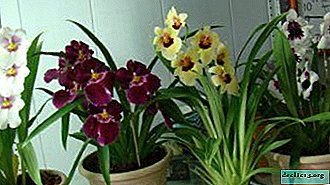 Seat selection - the best place on the window (west or east).
Seat selection - the best place on the window (west or east).- Soil and pot preparation - a special soil for orchids (store-bought) or prepared independently from pieces of pine bark (small), sphagnum, dried roots of fern, perlite and charcoal is suitable, it is important not to forget to put drainage on the bottom of the pot; we need a transparent pot, because the roots also need light.
- Temperature - the necessary daily temperature in the room: 20 - 23 degrees, and at night - 16 - 18 degrees, it is very important to avoid sudden changes.
- Humidity - Miltonia is rather capricious in relation to humidity, it needs humidity of at least 70%, so it would be great to put it, for example, in an aquarium or a greenhouse, where it is easier to create the desired microclimate, it is still very easy to maintain a given humidity with a home air humidifier.
- Lighting - Bright, but diffused light is required, a good option is a western or eastern window, if it is possible to use only a southern window, you will have to shade it, and in winter you will need to additionally equip the backlight (preferably with a lamp).
- Watering - the plant, of course, loves water, but here it is very important not to harm, not to fill in excess; on average, Miltonia needs to be watered once every 5 days by immersion (a pot with a plant is placed in a vessel with water for about 20 minutes), the water must always be clean and warm.
- Top dressing - It will be enough to apply liquid complex fertilizers (for orchids) once a month (during the growth period), but only after watering, because the roots should not be dry.
- Transfer - It is required at intervals of about 1 time in three years, when the plant slows down growth, and the roots begin to crawl out of the pot the new pot should not be too big, it will be enough to increase the volume by about 2 - 3 cm, do not forget to put drainage in the new pot; in the process of transplantation, one must act very carefully, do not damage sensitive and fragile roots and leaves, you can’t deepen the flower too much, otherwise it will not survive, you can not water the whole week after transplantation.
How to propagate?
The best time for breeding Miltonia is spring, you can combine the transplant with breeding. Basically, There are 2 ways to reproduce Miltonia, but, basically, they use one - by dividing the bush:
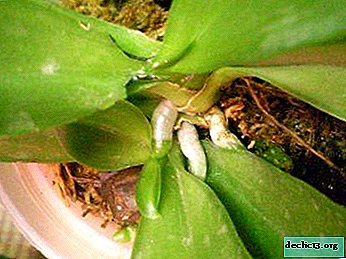 when we have already pulled the plant out of the pot (very carefully), take a sharp knife and divide it into parts so that each contains 3 or 5 pseudobulbs;
when we have already pulled the plant out of the pot (very carefully), take a sharp knife and divide it into parts so that each contains 3 or 5 pseudobulbs;- then we plant each new part in our pot;
- a week does not need to be watered, let the plants adapt.
The second way - division by roots:
- also, when transplanting, we look through the roots;
- we separate the pseudobulbs that formed as low as possible on the roots (3 pieces each) and preferably with sprouts;
- after that we transplant small bushes into separate pots.
Diseases and Pests
Dry air in our apartments and high temperature are the main reasons for the appearance of such unpleasant things for the plant as diseases and the attack of small insect pests: scale insects, thrips and whiteflies.
- If you notice yellow spots on your plant that gradually become discolored, this indicates the presence of whiteflies.
- If suddenly the leaves began to become covered with brown sticky plaques, these are scale insects.
- If the color of the leaves on the orchid changes and becomes like silver (a lot of gray dots appear), then thrips are present.
- The tips of the leaves of the plant turn yellow, and then the leaf completely - the problem is bad water, soil salinization occurs.
An orchid needs to be treated with an insecticide as soon as possible.
Prevention of various problems
You can try to avoid all these problems.:
- in summer, the plant must not be allowed to overheat, temperatures above 25 degrees and below 12 are excluded;
- closely monitor the condition of the roots - they are clearly visible through a transparent pot;
- the room where the orchid lives, it is imperative to periodically ventilate, but not to arrange a draft;
- the lack of light must be compensated for.
What conclusion can be drawn here? Of course, the Miltonia orchid is not so simple, it may still be tricky, it may not bloom right away, but nobody argues that it is unique. And when finally, having spent a certain amount of effort, we enjoy its amazing beauty, then we simply forget about all the troubles and worries and forgive her all the whims.
Useful video
Further, an informative video about the care of the Miltonia orchid at home:

 Seat selection - the best place on the window (west or east).
Seat selection - the best place on the window (west or east). when we have already pulled the plant out of the pot (very carefully), take a sharp knife and divide it into parts so that each contains 3 or 5 pseudobulbs;
when we have already pulled the plant out of the pot (very carefully), take a sharp knife and divide it into parts so that each contains 3 or 5 pseudobulbs;